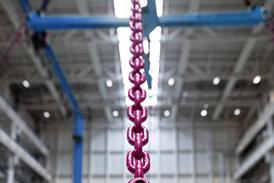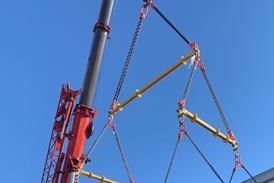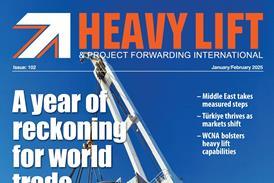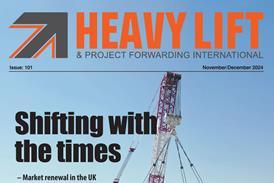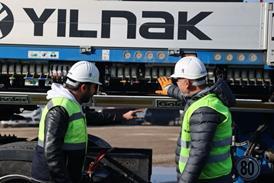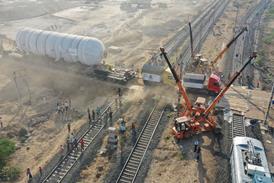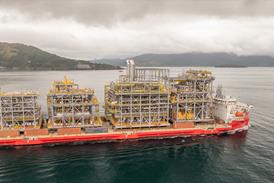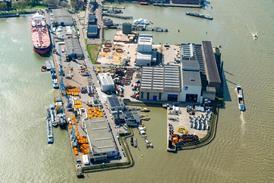As part of maintenance activity at ExxonMobil’s Fawley refinery in the UK, Mammoet supported with the exchange of a reactor head in the fluid catalytic cracker (FCC) unit. The Dutch transport engineering and heavy lift specialist called on its self-erecting Focus 30 pedestal crane to perform the job.

A growing population means an increase in energy consumption. However, refineries often need to operate from their existing footprint. Because of this, sites can become congested as existing space is allocated for new process equipment. Over time, this makes maintenance more complex.
In 2006, Mammoet supported the exchange of a regenerator at the same site. The PT50 ring crane was used, which had a significantly higher load moment and smaller footprint than commercially available crawler cranes at the time. Despite this, its boom had to be carefully assembled over live pipework as there wasn’t enough free space to construct it at ground level.
18 years on, with even less site space to carry out this project, Mammoet’s engineers suggested using the Focus 30. Dubbed ‘the crane that builds itself’, it has been specifically designed to perform heavy lifting in facilities with complex infrastructure and limited space. In this case, the crane replaced the old 356-tonne reactor head while taking up a footprint slightly larger than a five-a-side football pitch.
This high-capacity pedestal crane has a boom that is erected vertically in sections, instead of horizontally. This not only allows for faster assembly, but for the crane to be built in a footprint measuring just 34 m x 42 m. It also means that the crane’s boom does not need to be laid flat before erection, potentially blocking access roads onsite.
Move3D support
At the planning stage, Mammoet’s engineers conducted a full 3D scan of the refinery’s reactor and, using in-house planning software Move3D, visualised the project to show how the pedestal crane would be positioned and used onsite.
Combining this software with 3D scan data, Mammoet was able to identify any clashes in the highly congested site. The lift’s close proximity to an absorption column demanded a level of scrutiny and accuracy that couldn’t be provided by a traditional 2D approach.
By carefully positioning the Focus 30 crane around existing infrastructure, hardly any alterations were needed in the field. Only one large pipe was identified early in the engineering process, and this was able to be removed without delay.
Moreover, Mammoet said that it designed a specialist lifting beam that could be inserted through the top nozzle of the reactor head and clamped to its interior. The lifting beam had two large lifting pads that carried the reactor top from the inside of its plenum. This methodology provided a sure grip of the reactor head as it was lifted.
The Focus 30 was configured with a divisible superlift tray of 900-tonne and 400-tonne sections, making the movement of the ballast fast and simple, while ensuring the crane did not need to slew over live pipe racks with the load.
The Focus 30 has 30,000 tonne m of load moment, yet has only one-sixth of the footprint, compared to currently commercially available crawler cranes with comparable strength; it solves three of the biggest challenges that plant owners face: lifting capacity, space and time, according to Koen Totté, sales manager at Mammoet: “It takes around three to four weeks to assemble the Focus 30. By comparison, a heavy lift crawler crane would have taken around five weeks.
“We would also have needed to build its boom over the pipe rack, which would have been very time consuming and added risk due to working at a height of around 10 meters over this live plant. With the Focus 30 we could work from inside the crane’s footprint, and not have to work at great height, making it a much quicker and safer alternative.”



